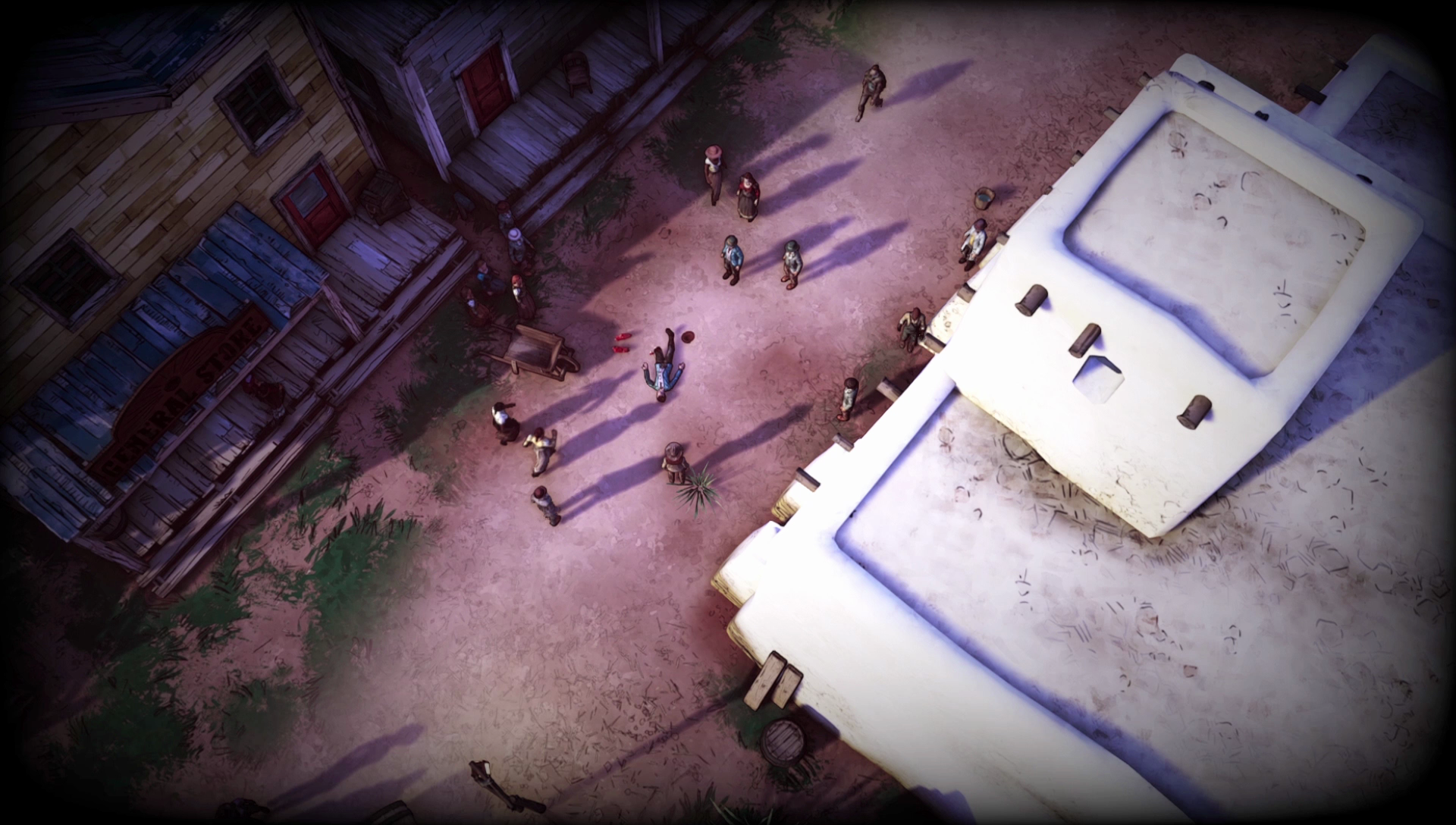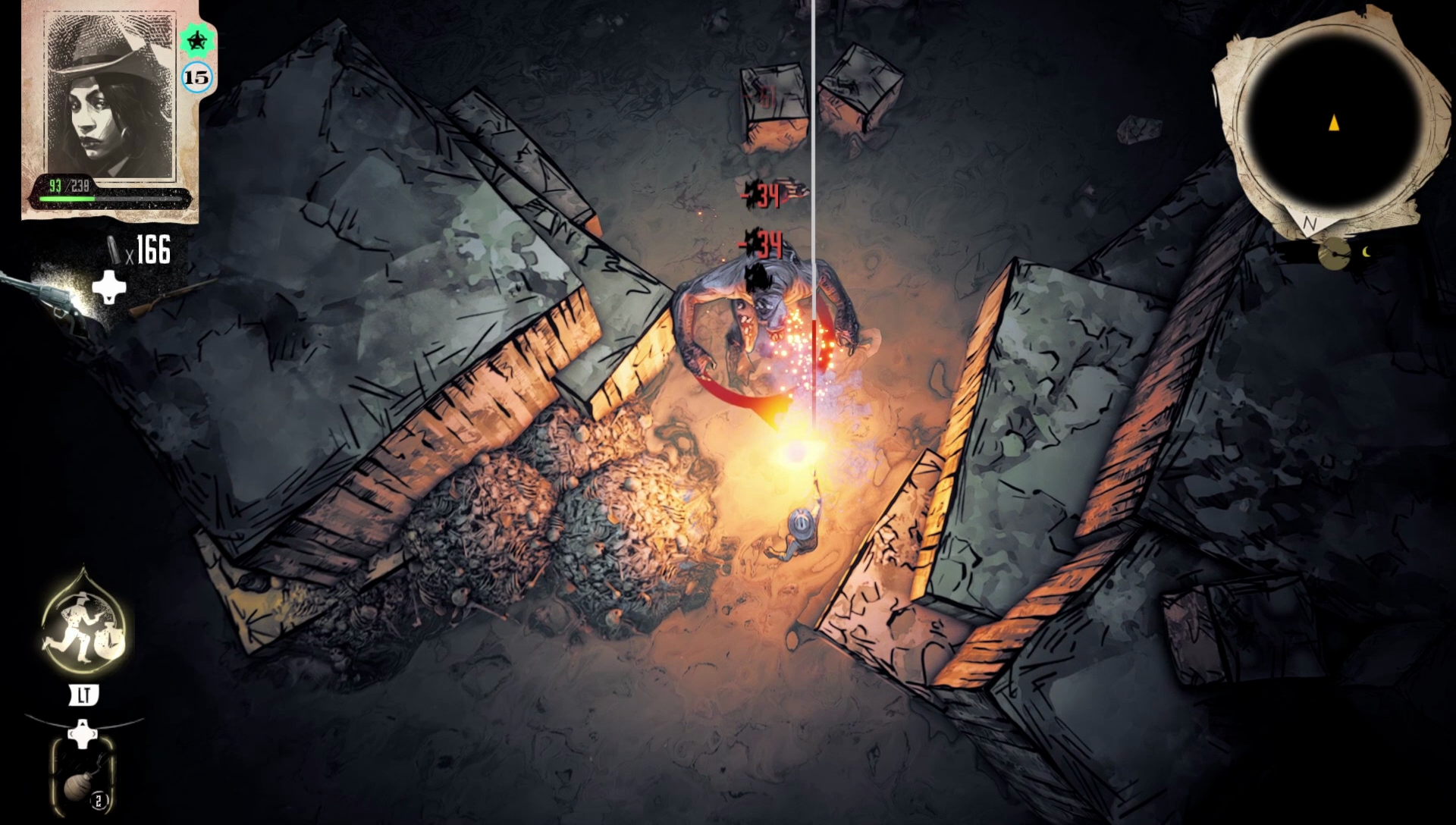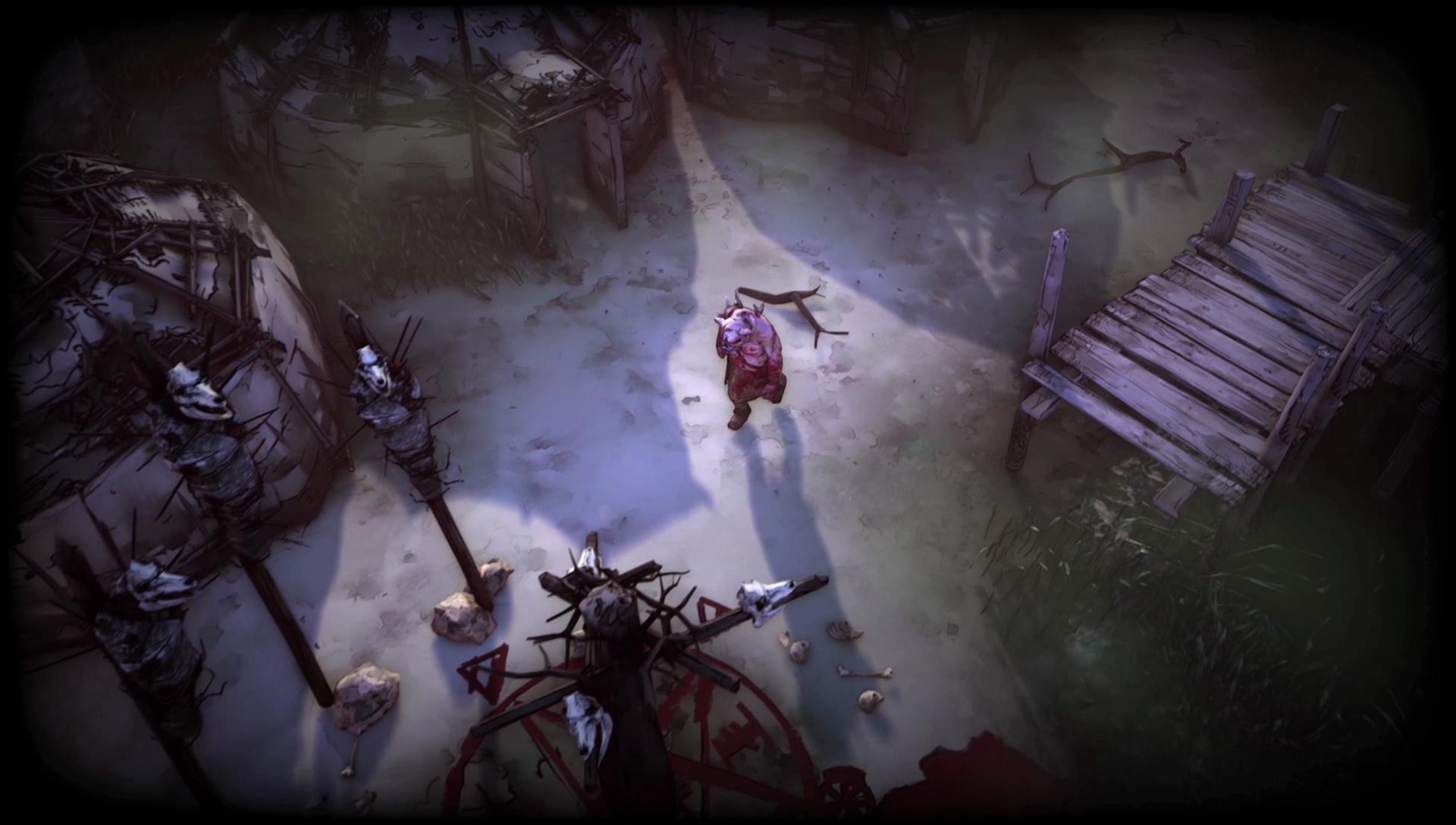Weird West is the messy kind of immersive sim Deathloop isn't
Hands-on with the first game from Arkane's co-founder since he formed a new studio.

One grisly stop on a trek through the first of five chapters in Weird West will remind you of what was so scarce in its most recent contemporary, Arkane Studios' Deathloop. Both are immersive sims by definition, but with different goals: Deathloop was about harnessing an unwieldy system, whereas Weird West is about living in it.
Early in Weird West, for example, I sauntered across a coven ritual. The witches asked me to leave them alone, but before I could walk away, their ritual succeeded. A horde of undead and their ghastly leader poured out of the summoning circle. The sisters were prepared for it. They had guns and they took care of the abominations like it was a Monday. I just watched.
This event, like some others I experienced in a preview version of Weird West's first act, unfolded without any input from me. Deathloop's inhabitants also go about their days without you, but little of consequence happens without your intervention. You rarely get to stand back and watch everything play out, taking note of the places you could have intervened but didn't.
Raphaël Colantonio, Weird West’s creative director, previously led Arkane's admirable effort to keep the immersive sim genre alive with Dishonored and Prey. In 2017, Colantonio left the studio he founded, and in 2019 he formed a new studio called WolfEye. Arkane went on to release Deathloop, a slick, modernized take on the genre, whereas WolfEye's Weird West travels back in time and plucks from classic RPGs like Fallout, arguing for an immersive sim that doesn't revolve around you.

Like Deathloop, Weird West is about finding your own way through environments designed first and foremost to obey physical laws: bullets ignite barrels, unconscious bodies get flung into fires, and the elements at your disposal are often at the enemies', too. Like Deathloop's island, the setting is a playground for the absurd, a smear of the American West with devils in the seams. Beyond that, the two games diverge.
Weird West yanks the camera back from the first-person view established by Ultima Underworld and System Shock to a bird's eye view, turning the characters into board game pieces. But that hasn't made it impersonal. As I led my veteran bounty hunter through Weird West's tangled world, I spent a lot of time speaking with the people, something that happens rarely in Deathloop. I didn't remember their names, but I remembered their faces thanks to Cedric Peyravernay’s art, which previously defined the gloomy Dishonored series. His portraits are raw like Disco Elysium's cast, but not quite as surreal.
Not everyone I bumped into had a story to tell or a quest to give. A recurring character who takes the form of a young, dead girl referred to my character as "the passenger" almost as if that name was for me, the player. Nods to the nature of Weird West's world (hint: it's weird) and not only my character's place in it, but my place as the player, upended a lot of my assumptions about how it'd frame a well-trodden sort of fiction.
Keep up to date with the most important stories and the best deals, as picked by the PC Gamer team.
Weird West is about making plans that inevitably tumble out of control.
It's also the first game I've played set in this time period that features a number of Black and Asian characters, although it's unclear to me at this point if Weird West plans to grapple with America's westward expansion from those perspectives or the native perspective, which are often erased in western fiction, or if the supernatural will take center stage. The level of historic transformation here doesn't resemble Friends at the Table's Sangfielle, which disassembles the bones of the Old West into something monstrous and unknowable. The five hours I spent with Weird West wasn't enough time to guess at where the story goes, but I was able to get a grip on my role in the game.

It doesn’t take long before you start to see where Weird West is coming from. It's a character-driven RPG where you solve problems and mysteries, primarily with a gun. Instead of minimizing your combat encounters like a Deathloop speedrun, you fail and improvise as in a speedrun gone wrong. Weird West is about making plans that inevitably tumble out of control.
The first character, a bounty hunter in search of her husband, is equipped with a series of lethal and silent skills but is incredibly weak. Enemies carrying shotguns blasted my health away in a few shots. I was forced to take cover, roll, and carefully aim, but every bullet felt like a dice roll. Stealth is an option too, but the density of enemy patrols made it hard for me to stay undetected, often leading to frantic firefights anyway. And when the caves coughed up monsters, the sturdy crates I was hiding behind couldn't save me. Skills that allow you to unload a full clip in one powerful shot or leap into slow-motion to dodge a swipe are vital. The only way to earn these is by searching through chests and dressers and stepping down hidden paths—another way Weird West lures you into its gears.
The world repeatedly reminds you that you're insignificant.
Combat encounters are broken into chunks, and each area is filled with oil barrels, explosive lamps, pools to electrify, and tall grass to hide in or set on fire. When you toss a stick of dynamite and it inevitably hits an object right in front of you and lands at your feet, the scramble begins. Guards are alerted. You panic, and scan the environment for a way out of it. Sure, you could quick load back in time and try again, but the most satisfying fights are chaotic. When it works in your favor, such as when a bandit trips over your dynamite as you slip out the window unseen, it's canon. You couldn’t write anything better than that.

Whether you run into a pack of bandits or a pack of traveling merchants on your journey across the shrouded map, both will rob you of something. And that’s why Weird West works, at least in the early hours I previewed. Despite having considerable influence over the scenarios you can find yourself in, the world repeatedly reminds you that you're insignificant, that there's much more going on than what you can see, and that to make it through, you'll need a bit of luck. Even your own character seems to be not of this plane, marked with a sign that asks a larger question you'll hopefully answer as you return to the same world via the four other characters. Weird West promises that decisions and relationships you make as one character will ripple out to the next.
In contrast, Deathloop wasn't my kind of immersive sim. The time loop premise means that nothing lasts, and repeatedly going through the same levels until I'd squeezed them of their spontaneity felt antithetical to the genre's strengths. "Play your own way" only works if you're pressured to do so.
Weird West reassured me that the immersive sim is still playful, still sharp, and open for interpretation by developers who want to push it further. If what I played is close to what the final game will be in early 2022, I'll be thrilled to step into its clockwork world and make some mistakes.
Tyler has covered videogames and PC hardware for 15 years. He regularly spends time playing and reporting on games like Diablo 4, Elden Ring, Overwatch 2, and Final Fantasy 14. While his specialty is in action RPGs and MMOs, he's driven to cover all sorts of games whether they're broken, beautiful, or bizarre.

